In this flashback to issue 105 Tran Nguyen opens the pages to her sketchbook filled with surreal and fantasy images inspired by nature and odd dreams…
Tran Nguyen is a Georgia-based gallery artist and freelance illustrator. She has worked for clients such as Playboy, Tor, McDonald’s, Chateau St. Michelle Winery, and has showcased with galleries in California, New York, Spain, and Italy. She is currently represented by Richard Solomon and Thinkspace gallery.
Sketching preliminaries help me explore possible concepts, compositions, value studies, and placement of details. It’s the foundation of a final illustration. When conceptualizing for a client, I want to make sure that the main idea is conveyed in the best possible way. In order to yield this, it takes several composition thumbnails and rough ideation comps to find the perfect solution to the client’s need.
When I’m not creating for a client, sketching is a superb way to keep my hand flexible and exercise muscle memory — it’s extremely important to maintain your anatomy skills. Attending figure drawing classes is a must, or if it’s not accessible, they’re plenty of resources available online. I enjoy rough, gestural ones as oppose to tight figure studies.
Since my paintings are quite refined, it’s therapeutic to sketch in a more relaxed manner. I think it’s crucial to keep your free-sketching loose so that you can liberate yourself from the restraints and rigidity of having to detail every asset of an image.
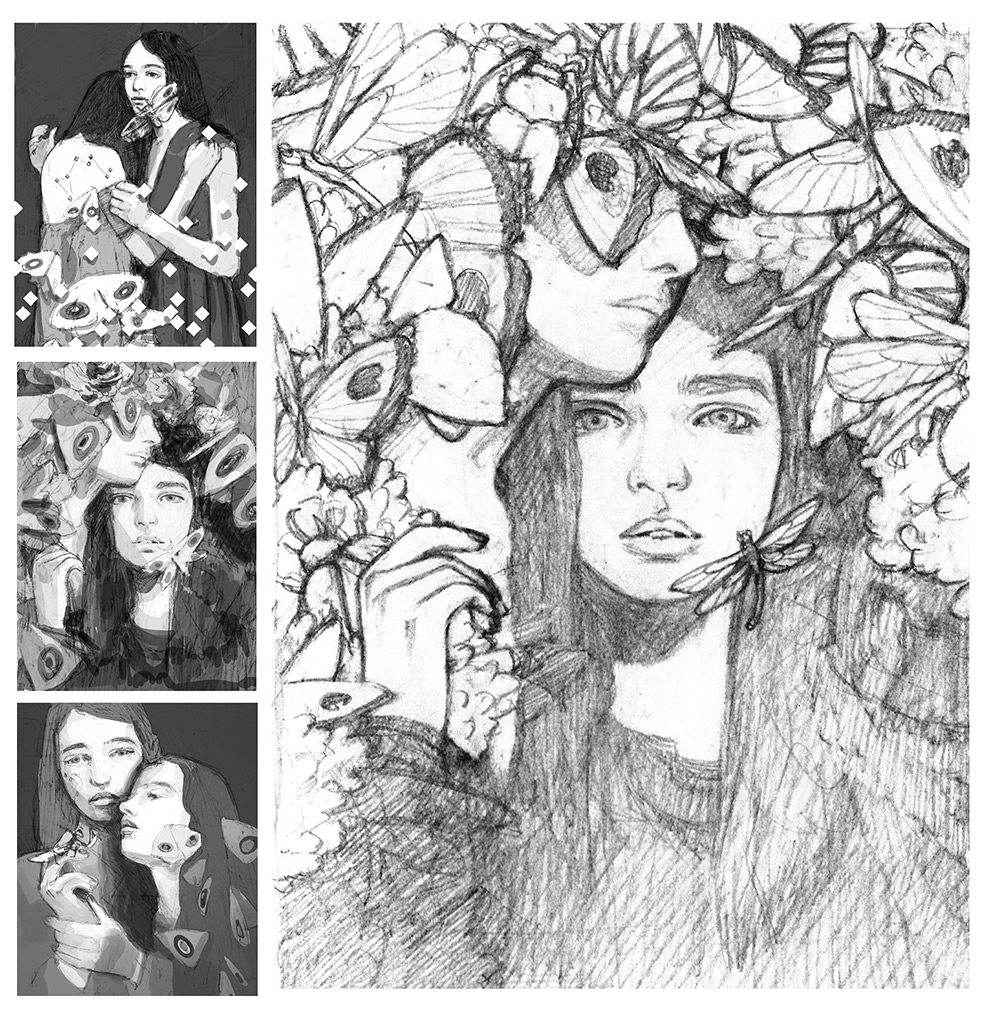
The three thumbnails and rough final sketch were done for a short story over at Tor.com. The story focuses on two sisters and how their lives parallel that of insects
© Tran Nguyen
Inspiration and Ideas
Most of my inspirations are from the people I know and meet, and their stories. I’m fond of interpreting their situations and visually representing it through abstract shapes, billowing fabric, and recurring motifs. My surrealism and fantasy influences come from nature and the odd dreams I have from time to time.
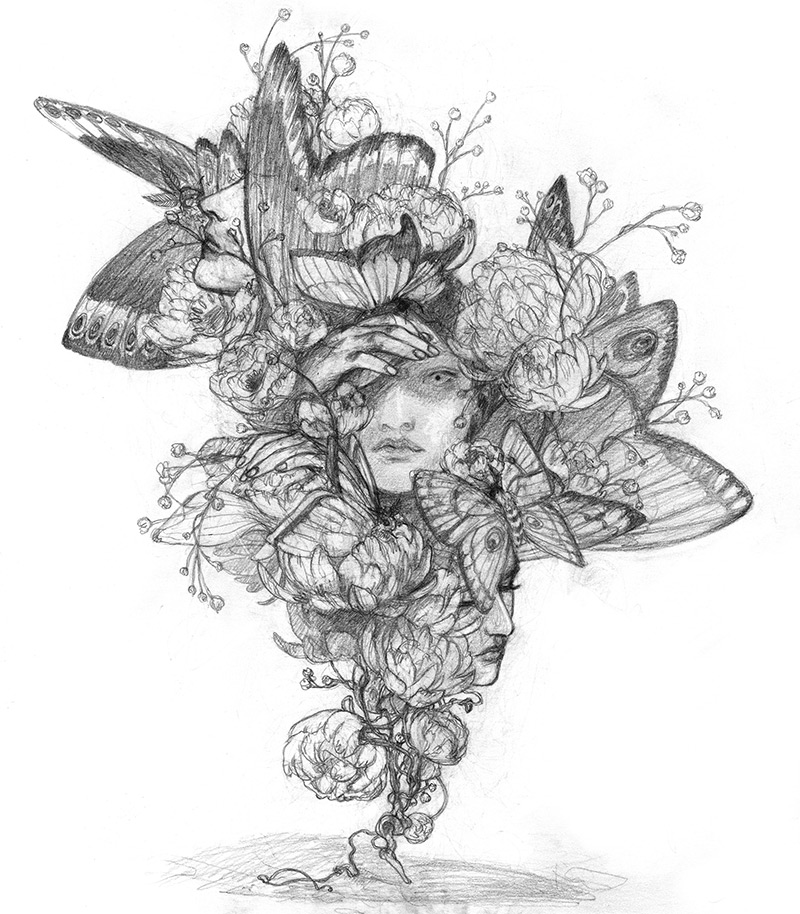
One of the preliminaries for a two-person show I did at Thinkspace Gallery in Culver City. The series emphasizes mental rapture and turmoil © Tran Nguyen
Materials
My preliminaries are usually done on a small, intimate scale and the best surface for this is smooth Bristol paper. I generally prefer graphite when it comes to sketching, from grade 8H to 9B, Tuff Stuff eraser sticks, and Prismacolor’s Magic Rub. For value studies, I’ll sometimes import the graphite sketch into Adobe Photoshop to add a deeper level of lights and darks. Using a Wacom Intuos 3 tablet and the soft round brush, I can create a more refined study for clients before continuing onto the final illustration.
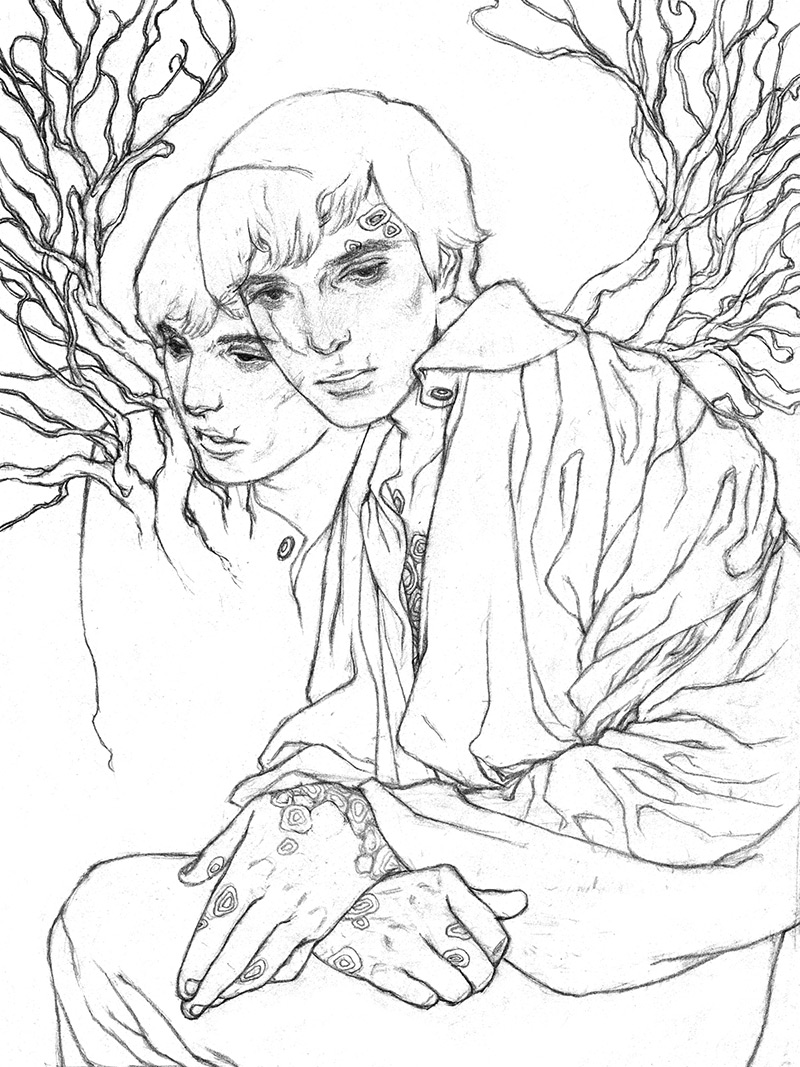
Live for the sake of your soul … because doing otherwise would be irreverent. And if we don’t, it will slowly but surely dissipate from our body, leaving a vacant shell bare of existential aesthetics. If you’ve no family or friends worth living for, then live for the sake of your soul
© Tran Nguyen
Sketching Techniques
A few techniques that I use include hatching, crosshatching, blending, and linear mark-making. Hatching and crosshatching is a great way to create value with texture, especially for detailing fabric. Blending or smearing the graphite allows for a smooth gradient in rendering skin or round objects. With linear mark-making, I can great a bolder gradient with a particular texture. For example, if I render with a circular motion, the gradation will appear smoother with a light circular texture. It’s the same if I use an oval or rectangular shape.
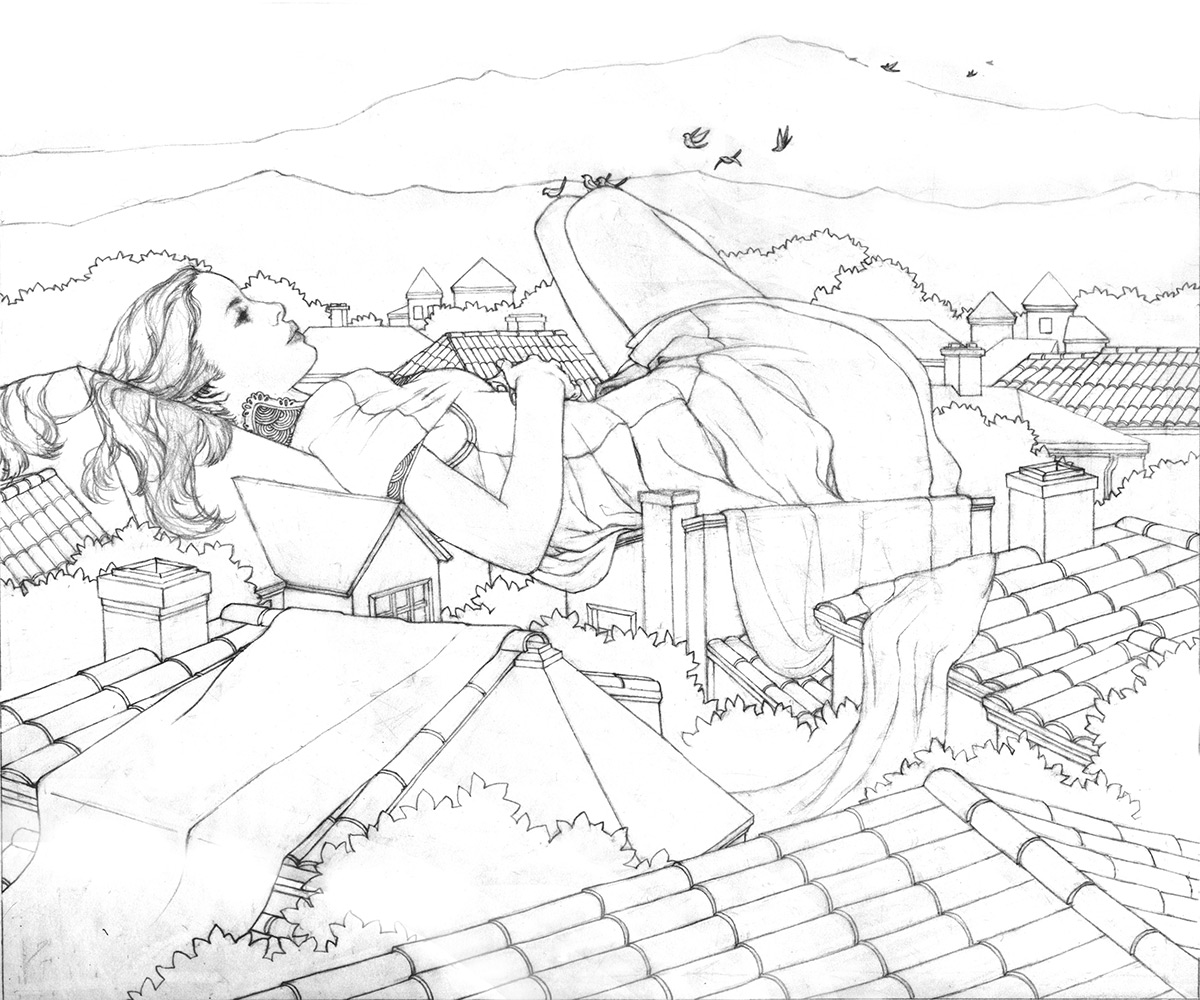
This is one of my favorite sketches that I did for a series that explores the wonder of nostalgia and distant memories
© Tran Nguyen
Keep it loose
When you sketch, make sure you keep your lines and shapes loose. I like to start with scribbly lines to create random shapes. After a while, certain forms will appear. Also try to keep your pencil tip on the paper – not picking it up while you scribble will allow for more dynamic shapes. The purpose of sketching isn’t to create a perfectly rendered image – it’s used to help you problem-solve whatever it is that the client has presented to you.
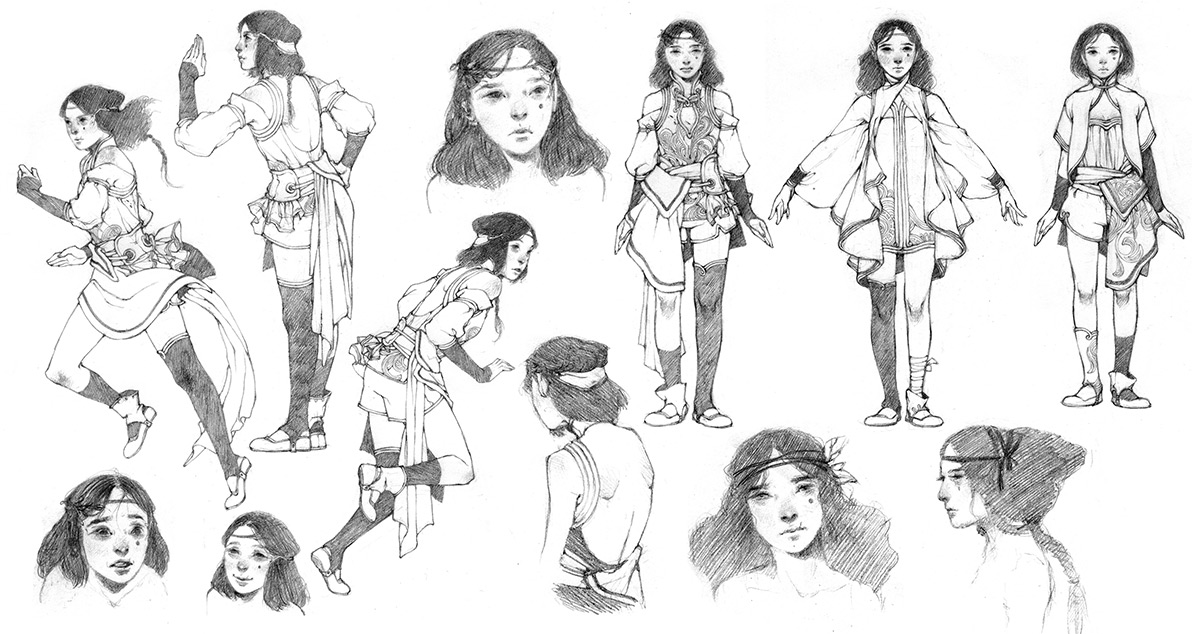
This is a character sheet of an original design
© Tran Nguyen
Make use of your wrist
Execute your sketches with the entire scope of your wrist, not just your fingers. Your carpal bones offer almost 360 degrees of motion range. Make use of it. In doing so, your curves will be smoother and your lines will be straighter. It’s a great way to avoid rigid figure work, and create more compelling character compositions.
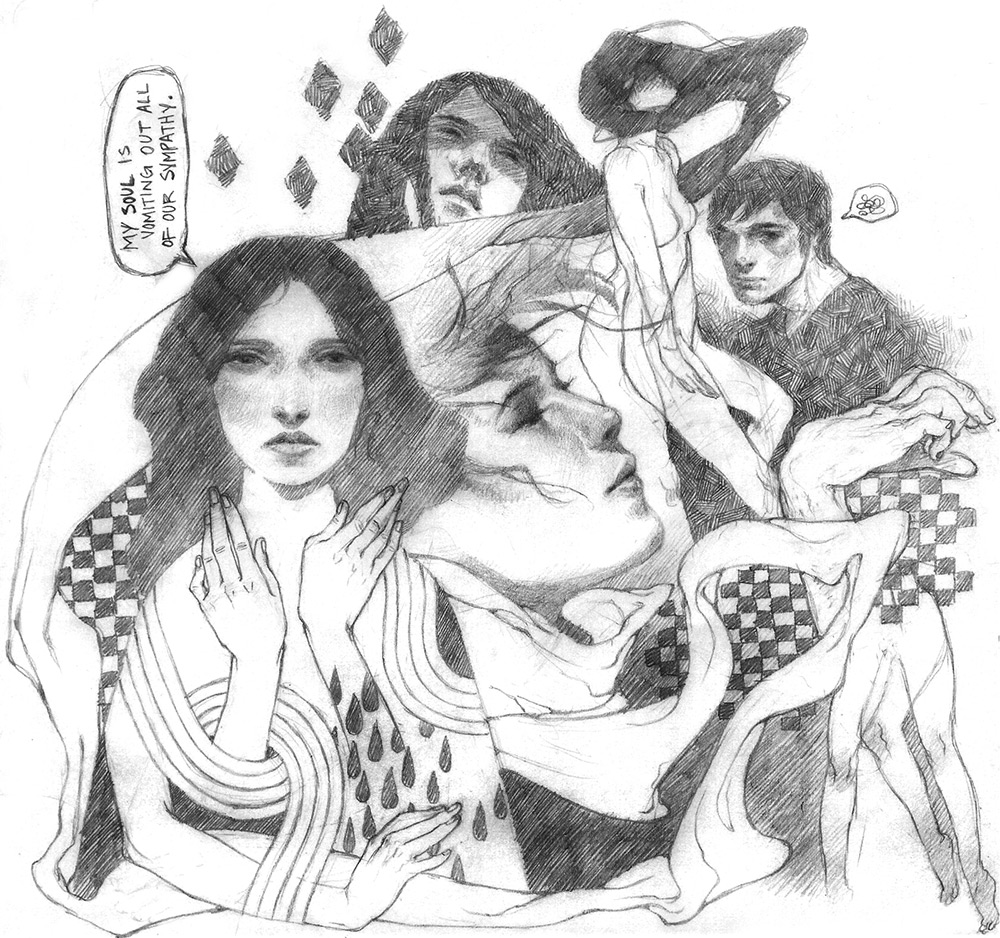
This is a figure study montage
© Tran Nguyen

